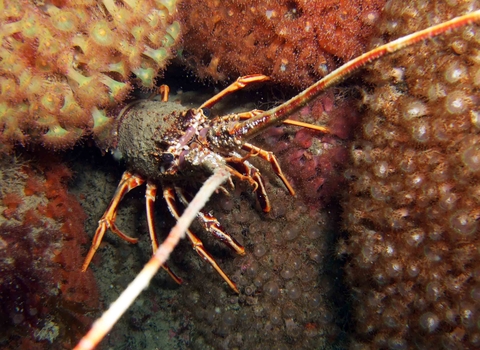
Spiny lobster ©Dominic Flint
Spiny lobster
Spiny lobster, crawfish, crayfish, rock lobsters - many names, one animal! This pretty lobster was made extinct in many areas through overfishing, but is now making a slow comeback.
Enw gwyddonol
Palinurus elephasPryd i'w gweld
January to DecemberTop facts
Categori
Stats
Length: up to 60cmClassified as a Priority Species under the UK Post-2010 Biodiversity Framework. It is also a Feature of Conservation Importance for which Marine Conservation Zones can be designated in English and non-devolved offshore waters. Classified as Vulnerable on the IUCN Red List.
Ynghylch
The spiny lobster is a crustacean, related to crabs and even barnacles. They lack the typical large pincers of Common lobsters and instead have 2 small hook-like claws. They live in crevices and caves amongst the rocks in shallow waters down to around 70m.They get their name from the spines than cover their shell (carapace), though they are also known as crawfish, crayfish and rock lobster - depending where you are in the UK! They stay in their hidey-holes during the daytime and come out to feed at night. They are scavengers and will feast on whatever they can find, including crabs, worms, starfish and any dead animals.
